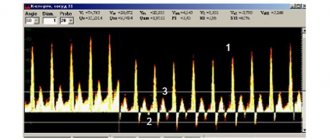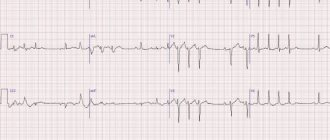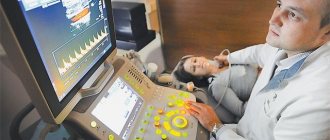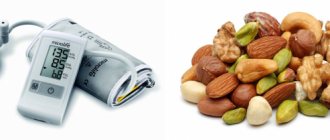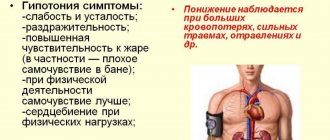High blood pressure training
Exercise can help prevent high blood pressure, and people who already have high blood pressure can reduce it slightly by starting to do more exercise. For example, endurance exercise—40 minutes of cycling at an intensity of 60 percent of VO2max—helps lower blood pressure.
There is less information about the effects of strength training on blood pressure, although it is known that during sets with heavy weights, blood pressure can skyrocket. For people with vulnerable blood vessels, the temporary spike in blood pressure may be too much. However, there are studies that show that good breathing techniques and the use of blood pressure-lowering medications such as propranolol can help smooth out this peak.
The effect of running on the body of hypertensive patients
Analyzing the listed causes of blood pressure, it seems that running with hypertension is contraindicated: after all, it is an additional load on the heart.
Download training plans to prepare for the marathon and half marathon.
Start preparing right now!
But scientific research confirms the opposite effect. Ralph Paffenbarger, a scientist at Harvard University, conducted a study among 1,700 people with hypertension and varying levels of activity.
Participants were divided into 4 groups:
- Group 1: spending up to 500 kcal/week through physical activity;
- Group 2: 1000 kcal/week;
- Group 3: up to 3500 kcal/week;
- Group 4: more than 3500 kcal/week, intense training.
The mortality risk of group 1 did not change, group 2 decreased by 22%, group 3 decreased by 54%!
However, athletes in group 4 had the opposite effect - an increased risk of developing arrhythmia.
Why did running reduce the mortality rate among hypertensive patients so much?
- The heart muscle is trained. The heart rate decreases when running, which significantly reduces the load on the heart muscle;
- A network of collateral capillaries develops, so the load on the vascular bed also decreases;
- Lipid metabolism is normalized: the amount of “harmful” fats decreases, the risk of developing atherosclerosis decreases + the elasticity of blood vessels increases;
- Cardiac oxygenation improves, hypoxia levels decrease;
- Liquid is lost through sweat, and water-electrolyte metabolism is normalized (with proper hydration!).
It is now becoming clear that running for hypertension helps reduce symptoms and reduce the risk of mortality!
But it is important to remember that sports must be used correctly for their intended purpose so as not to harm the body.
Is it possible to exercise with high blood pressure: study
To answer this question, researchers asked 32 women aged 60 to 75, all of whom had high blood pressure, to do strength training three times a week for four months. Each session, participants trained major muscle groups by performing ten simple compound exercises: upright rows, leg extensions, chest presses, hip abductions, leg curls, leg presses, and calf raises. The women performed three sets of each exercise. They started with 60 percent of the weight, one-rep maximum, and gradually increased it to 80 percent. The control group did not exercise at all [CG].
Exercises for hypertension
Physical activity for hypertension includes breathing exercises, physical exercise and morning exercises. If you wish, you can do fitness or visit the gym, but such classes must be carried out under the individual supervision of a trainer. If during training you experience dizziness, nausea, headaches and muscle weakness, you need to stop training and immediately seek advice from a specialist. Here are effective exercises you can do with high blood pressure:
- Charger. This type of training requires devoting 30 minutes of free time daily. It is recommended to perform body and head turns, bending and straightening of legs and arms, bending to the sides, and steps in place.
- Jogging. It is recommended to run slowly for 10-15 minutes. Then change from running to race walking, but you cannot stop. It takes 15 minutes to alternate. leisurely jogging with 10-minute brisk walking.
- Dancing. It is advisable to give preference to oriental and ballroom dances, which additionally get rid of extra pounds, remove the stomach and other problem areas of the figure.
- Swimming. You can play sports in the pool. To normalize external breathing, it is recommended to inhale and exhale and choose a useful static load on the muscle corset for exercise.
- Cycling. This can be not only trips through mountainous areas, but also regular exercise on an exercise bike. It is recommended to ride slowly, while alternating the pace, monitoring your breathing and pulse.
According to Bubnovsky
This type of physical therapy is suitable for hypertensive patients of all ages. Specially designed exercises do not cause any particular difficulties and can be performed in the comfort of your own home. Sports for hypertensive patients according to Bubnovsky provides the following training complex:
- Lie on your back, bend your knees, and stretch your arms along your body. Straighten your legs, lift them up, then return to the starting position. The recommended number of repetitions is 6-8 times.
- Lying on your back, you first need to take a deep breath and then exhale intensely. You are supposed to do 6-8 repetitions of this exercise, after which you can rest.
- While lying on your back, you will have to tense your thigh muscles for a few seconds, then relax. Repeat the exercise up to 8-10 times without a break.
- Lying on your back, extend your arms above your head. Lift your shoulders off the floor one time and place your upper limbs behind your head, two times return to the starting position. An acceptable number of repetitions is up to 8-10 times.
- Remaining in a horizontal position, you need to lift one leg and perform several circular movements with it. Then change limbs. Up to 8 repetitions are allowed on each side.
Such exercises with high blood pressure can be performed daily, each time controlling the load on the body. If the applied tension causes internal discomfort and even pain, you need to consult your doctor unscheduled. There are no medical contraindications for practicing this sport, but physical effort if not used correctly can only harm your health.
According to Strelnikova
For grade 2 high blood pressure, doctors recommend implementing Strelnikova’s method, which involves special breathing manipulations. This is a good opportunity to stabilize blood pressure and prevent the occurrence of hypertensive stroke (crisis). It is necessary to take 3 shallow breaths through the nose with a time interval of 2 seconds. Then exhale slowly through your mouth, while straining your chest in any way. Below are some simple exercises for every day:
- "Palms." Stand up straight, straighten your shoulders, bend your arms at the elbows and extend them forward with your palms facing away from you. As you inhale, clasp your palms tightly, and as you exhale, relax them as much as possible. It is recommended to do 24 sets of 4 times.
- "Cat". Stand up straight, place your feet shoulder-width apart. Bend your lower limbs slightly at the knees, hold your bent arms at chest level, and relax your hands. As you inhale, turn your body to the left, simultaneously shaking your palms; as you exhale, return to the start. Repeat the movement in the opposite direction. Recommended 20 repetitions per approach.
- "Pump". In a standing position, stretch your arms along your body, feet shoulder-width apart, and lean your body forward. Take a short breath, bending even more. As you exhale, raise your body while remaining in a half-bow. Repeat this movement at increased pressure up to 25 times without interruption.
According to Strelnikova’s method, a hypertensive patient should perform up to 500 inhalations and exhalations in one training session. If you have high blood pressure, it is not contraindicated to engage in such sports; on the contrary, it is allowed. This is a good opportunity to quickly stop an attack and prolong the period of remission without taking medications. Alternatively, you can try yoga and Pilates.
Blood pressure drops after training: this is normal!
We also know that in people with normal and high blood pressure, blood pressure drops slightly in the first hour after strength training.
Citrulline malate also has post-training hypotensive effects (associated with lowering blood pressure) in hypertensive patients. It was found that taking 6 grams of citrulline malate before exercise leads to a greater decrease in systolic and diastolic blood pressure within 24 hours after exercise compared to placebo.
The researchers wanted to know what the effects of strength training would be on women with high blood pressure who regularly take blood pressure-lowering medications. Will strength training have a positive effect? Or would women be better off doing moderately intense forms of exercise?
Rules for running with arterial hypertension
Exploratory survey
Before you start training, you should definitely consult your doctor. Only a specialist will accurately answer your question: “Is it possible to run with hypertension?”
Ideally, do a treadmill test. This is a gradual increase in speed, load (angle of inclination) of the treadmill with constant measurement of pressure, pulse, and gas composition of exhaled air.
Based on the results of the examination, the doctor can assess heart failure, exercise tolerance, and acceptable physical activity level. The doctor will adjust the treatment and give recommendations on running.
If it is not possible to do a treadmill, keep a blood pressure diary yourself: record the time of blood pressure surges, how quickly the pulse recovers after exercise. This will help the doctor assess the condition of your body.
Calculating the intensity of the load
Before training, measure your blood pressure: if the reading is above 160/100, exercise is prohibited! Be sure to take your heart rate monitor and sports watch with you.
Evaluate the load NOT by speed or distance covered, but by running time and heart rate.
You can calculate the proper level of load based on pulse zones. To keep your blood pressure normal, stay in 1-2 zones:
0.5 - 0.75 * (220 - age)
For example, at the age of 50, running with hypertension is allowed in the heart rate range: 85 - 128 beats/min.
You can increase the load level by 10% every week under the supervision of a doctor after a month of regular exercise! Avoid high-intensity training (especially if you have a high BMI or have had a heart attack/stroke).
Initially, we recommend that you run 3 times a week, gradually moving to 5-day sessions.
Drinking regime
We originally discussed that fluid retention increases stroke volume, causing hypertension. At the same time, running always means a loss of fluid, which needs to be replenished before, during and after training.
What is important for hypertensive patients to remember?
- Drink as needed - but no more than 35 ml/kg body weight/day;
- Try to replenish your fluid intake with isotonic drinks rather than water. An increased level of fluid without electrolytes impairs the contractility of the heart and overloads the blood vessels!
- Assess the color of your urine: if it is very light (almost clear), you are drinking too much liquid. If it is concentrated orange, there is not enough liquid;
- Avoid eating salty, fatty, fried foods. These foods increase thirst and retain fluid.
Pressure after exercise: research results
When women weren't taking high blood pressure medications, their systolic pressure [the pressure during a heartbeat] was above 140 mmHg and their diastolic pressure [the pressure between two heartbeats] was above 90 mmHg. Art. The table below shows that resting systolic blood pressure in the experimental group decreased by 14.3 mmHg. This was a statistically significant effect. The second table shows that resting diastolic blood pressure decreased by 3.6 mmHg. The effect was not entirely significant.
Thus, women with high blood pressure that is under control can engage in strength training, the researchers conclude. They need to be sure to gradually increase the weight they work with. Smart strength training can help keep your blood pressure under control and may even help lower it. “The chronic reduction in resting blood pressure observed in this study can be translated into a significant protective effect on the cardiovascular system of participants,” the Brazilian scientists wrote.
Source:
- Acute and chronic effects of resistive exercise on blood pressure in hypertensive elderly women. Mota MR, de Oliveira RJ, Dutra MT, Pardono E, Terra DF, Lima RM, Simões HG, da Silva FM. J Strength Cond Res. 2013 Dec; 27(12):3475-80.
- Acute and chronic effects of aerobic and resistance exercise on ambulatory blood pressure. Cardoso CG Jr, Gomides RS, Queiroz AC, Pinto LG, da Silveira Lobo F, Tinucci T, Mion D Jr, de Moraes Forjaz CL. Clinics (Sao Paulo). Mar 2010; 65(3): 317-25.
- Different cardiovascular responses to a resistance training session in hypertensive women receiving propanolol compared with normotensive controls. Moraes Miguel F, Alexandre Grings L, Borges Pereira G, Diego Leite R, Vieira A, Frade de Sousa NM, Simão R, Prestes J. ScientificWorldJournal. 2012; 2012:913271
- The effect of resistance exercise on recovery blood pressure in normotensive and borderline hypertensive women. Fisher MM1. J Strength Cond Res. May 2001; 15 (2): 210-6.
- Inter-Individual Responses to Citrulline Malate Oral Supplementation on Post-Exercise Hypotension in Hypertensives: A 24-Hour Analysis. Casonatto J, Enokida DM, Grandolfi K. Arq Bras Cardiol. 2021 Jul 10;113(2):218-228.
